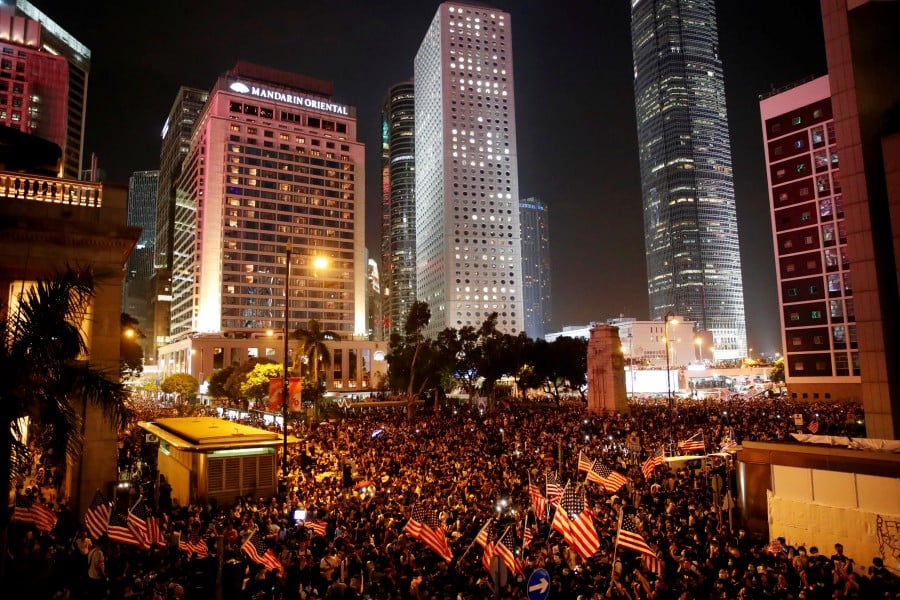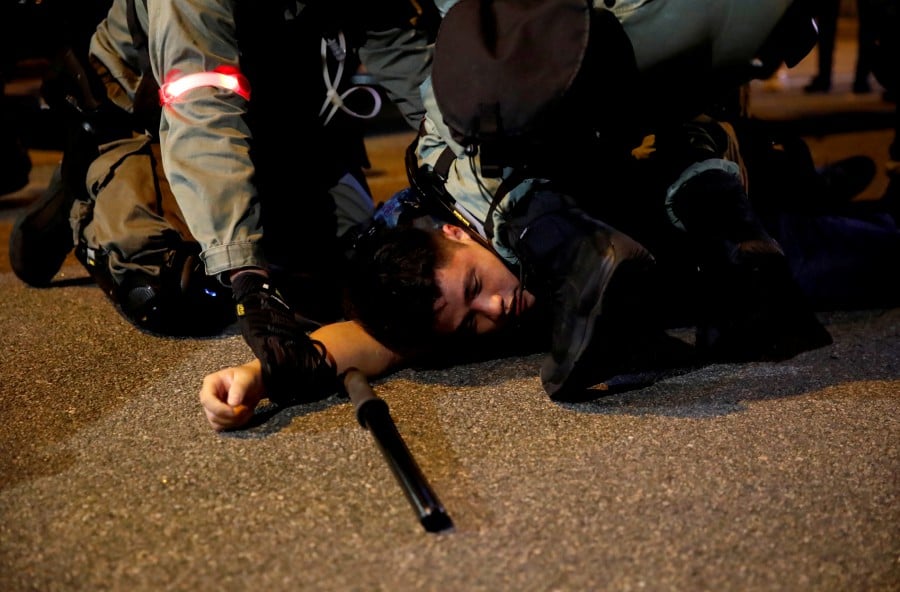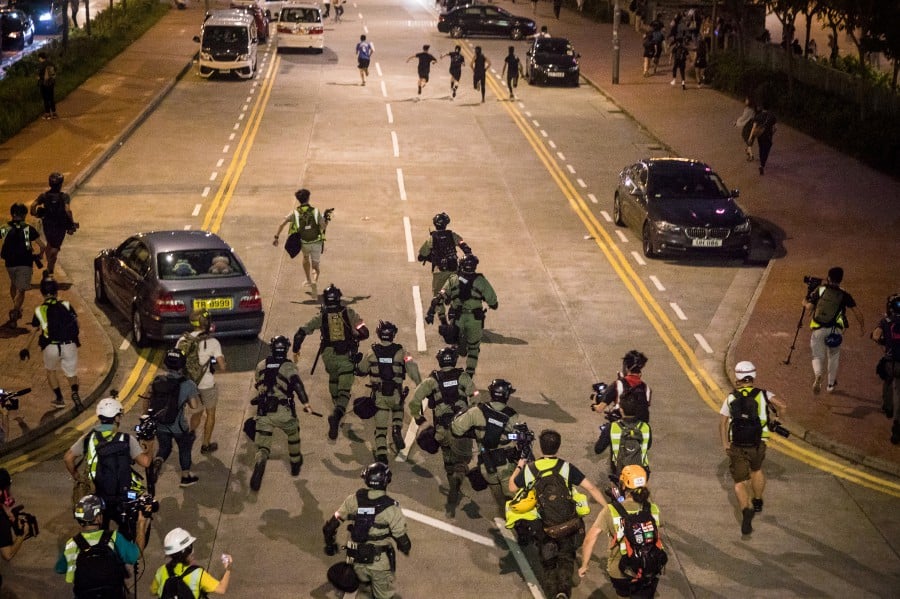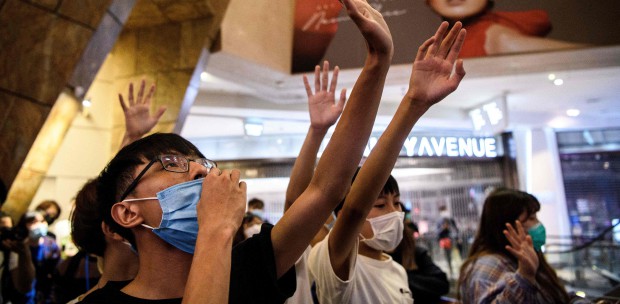HONG KONG: A homemade bomb was detonated in Hong Kong on Sunday amid violent protests, police said Monday, indicating an escalation in the street-level arms race between police officers and protesters.
The device was hidden in a bush and was activated by a mobile phone as a police vehicle passed nearby in the Mong Kok district of Kowloon, Suryanto Chin-chiu, the superintendent of the Hong Kong police’s explosives disposal unit, said at a news conference.

The bomb caused no damage or injuries, but it was the first time such a device had been employed in weeks of clashes, police said.
Once armed only with umbrellas to protect against rain and perhaps tear gas, the demonstrators have more recently brandished bricks and sidewalk paving stones, as well as knives and gasoline bombs.

The improvised bomb used Sunday, however, was far more complicated in design than a gasoline bomb, and required a higher degree of skill to manufacture. Improvised bombs, often called IEDs, have been used by insurgents in such places as Iraq, Afghanistan and Syria, but how lethal such weapons are depends in good part on the type and quantity of explosives used.
It was unclear what type of explosive charge was in the bomb Sunday; the answer would determine how serious any escalation of violence could be.

Tang Ping-keung, a deputy police commissioner, said at the same news conference that the force believed the device was intended to injure police officers.
“These people doing violent acts are not protesters. They are indeed rioters and criminals that are destroying our rule of law,” Tang said. “Whatever causes they claim they are fighting for can never justify such triad-like behaviour,” he added, referring to organised crime groups.
Images of the device showed a red plastic bag, wires, a battery, a Nokia mobile phone and what appears to be a circuit board of the kind typically used by hobbyists.
As the demonstrations have turned increasingly violent, Chinese authorities have labeled some of the protesters’ actions “close to terrorism.” Officials in Beijing have warned that the military could intervene in the protests, leaving Hong Kong to wonder what line would have to be crossed to draw such a response.

In another indication of the rising violence, an officer was stabbed in the neck by a demonstrator Sunday. Police said Monday that veins in the officer’s neck had been severed, and that he had undergone surgery and was in serious condition.
The police, too, have stepped up the firepower they have employed since the demonstrations began in June.
Protesters have deplored the officers’ use of pepper spray and tear gas as excessive since the early days of the protests, but this month an 18-year-old high school student was shot in the chest by a police officer — the first time a demonstrator had been struck with a live round. The teenager survived.

Police have also deployed trucks that fire a powerful stream of dyed water, capable of pushing back crowds and making demonstrators visible later to officers.
Police arrested 201 people, between the ages of 14 and 62, over the weekend, they said. The Hospital Authority said that 79 people sought medical attention Sunday. The police said 12 officers were injured over the weekend, including the officer who was stabbed.

The protests began 19 weeks ago over a contentious bill that would have allowed for the extradition of people in Hong Kong to mainland China for trial. Hong Kong, a semi-autonomous territory, has its own judicial system, and residents have additional rights.
The bill has since been shelved, but the protests have continued. Demonstrators’ demands have increased to include an investigation of the police and universal suffrage. - New York Times





